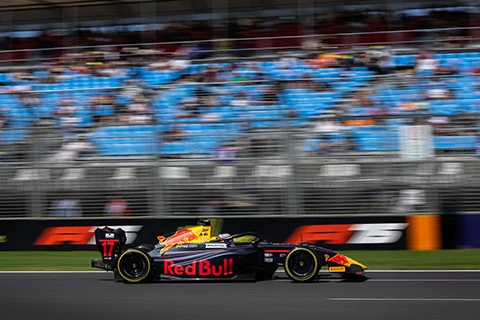You asked Google & NGK SPARK PLUG answers! – Part 3: Glow plugs

1. What does a glow plug do?
Glow plugs enable optimum ignition conditions and environmentally friendly combustion in diesel engines. Principally, they are used in ignition, receiving electrical energy and heating up to very high temperatures. They generate the temperature boost that diesel engines need to start, especially in cold conditions.
In normal temperatures, ambient air is drawn into the engine cylinders and then massively compressed to reach around 900°C. When the fuel is then injected, it ignites spontaneously. However, in winter, conditions for successful ignition become more difficult. The cold cylinder walls, pistons and valves try to extract heat from the cold intake air, and as a result the necessary combustion temperature is not achieved. Extra heat is needed – and that is where the glow plug comes into play. As soon as a current is supplied, the engine’s glow plugs heat up. This provides the extra heat needed for stable combustion. Once the engine is running, the glow plugs either return to being idle or continue to work, depending on their type.
2. What are the symptoms of a bad glow plug?
The most common symptoms of a bad glow plug are engine misfiring, hard starting, black or white exhaust smoke, decreased fuel efficiency and rough idling.
3. What causes a glow plug to malfunction?
Glow plugs can malfunction for a variety of reasons. These include: excessive heat due to fuel leaking from the injectors, too much voltage caused by a faulty controller or old age.
4. Are glow plugs only used for starting?
Improving cold starts is just one of the functions of modern glow plugs. They also contribute towards the reduction of engine emissions by generating a ‘post-glow’ for several minutes after ignition, which helps to ensure the diesel fuel completely combusts during the warm-up phase.
Glow plugs also benefit the health of the exhaust gas recirculation (EGR) valve by producing what is known as an ‘intermediate glow’. This helps to prevent the EGR valve from carbonising, which affects its ability to reduce the vehicle’s particle and nitrogen oxide emissions.
In addition, glow plugs support diesel particulate filter (DPF) regeneration (trapped carbon is burned off). To regenerate, the DPF must be heated up to more than 600°C for around ten minutes. One of the measures the ECU performs to achieve this, is the initiation of a ‘regeneration glow’ from the glow plugs. They increase to well over 1,000°C, which raises the combustion chamber temperature. This in turn increases the exhaust gas temperature; supporting DPF regeneration.
5. How long do glow plugs last?
This depends on a variety of factors. An average estimate is around 160,000km but glow plugs can fail before this if, for example, they are low quality ones, or the engine is not being looked after properly. NGK SPARK PLUG glow plugs guarantee long life and quality performance.
6. Is it OK to drive with a bad glow plug?
Faulty glow plugs should be replaced immediately as they will lead to a reduction in vehicle performance and hard starting, especially during winter when the vehicle may not start at all. DPF regeneration will not operate with defective glow plugs. This can lead to clogging of the DPF filter and ultimately high repair costs. Faulty glow plugs can also cause the EGR valve to clog more quickly which can also result in engine problems and repair costs. Engine misfiring, rough idling and an increase in emissions are other outcomes.
7. Are there different types of glow plugs?
NGK SPARK PLUG manufactures two different types of glow plug: metal rod (sheathed) and ceramic high temperature glow plugs.
Metal rod glow plugs are equipped with a heating coil in a glow rod made of heat-resistant metal. A specific material – magnesium oxide – in the interior of this glow rod, protects the heating coil from vibrations and shocks. Magnesium oxide is also an outstanding thermal conductor. This is why the heat that is produced quickly dissipates outwards. The main types of metal rod glow plugs are: standard rod glow plugs, self-regulating rod glow plugs and AQGS (advanced quick glow system) rod glow plugs.
Ceramic high temperature glow plugs were developed by NGK SPARK PLUG to enable automotive manufacturers to comply with ever-stricter emissions standards. This type of glow plug also provides extra high performance during extremely cold conditions. Because of the high melting point of the ceramic which encases it, the glow plug can withstand very rapid heating to higher temperatures over extended periods; reaching a ‘pre-glowing’ temperature of more than 1000°C in less than two seconds, even in freezing conditions.
What’s more, ceramic glow plugs can sustain an ‘after-glow’ for more than ten minutes, at temperatures of up to 1,350°C. This not only eliminates cold knocking, but also reduces blue and white smoke; meaning less hydrocarbon and carbon-monoxide emissions.
8. How do you remove glow plugs?
When a glow plug needs to be replaced, it is recommended to apply a synthetic engine oil around each glow plug and ideally let it penetrate for at least a week. This reduces the risk of shearing and makes removal easier. When removing, each glow plug should be manually disconnected from its electrical wire. When this is complete, each plug can be individually uninstalled with a suitable torque wrench.
9. How do you install a new glow plug?
Once an old glow plug is removed, a glow plug hole reamer loaded with silicone-free grease should be used to clean and empty each hole of carbon deposits. After that, the new glow plugs can be manually installed into their seats and then tightened with a correctly set torque wrench.
10. Should you replace all glow plugs at the same time?
Yes. It is recommended to replace all of the engine’s glow plugs at the same time because if one glow plug is faulty, the probability is that the others are not too far behind. The replacement of all the engine’s glow plugs at the same time will reduce maintenance costs in the long term as well as vehicle down-time. It will also help to optimise vehicle performance as the driver can rest assured that all of the engine’s glow plugs are making the same contribution.
Check out all about ignitions coils, leads and caps in our next blog!








